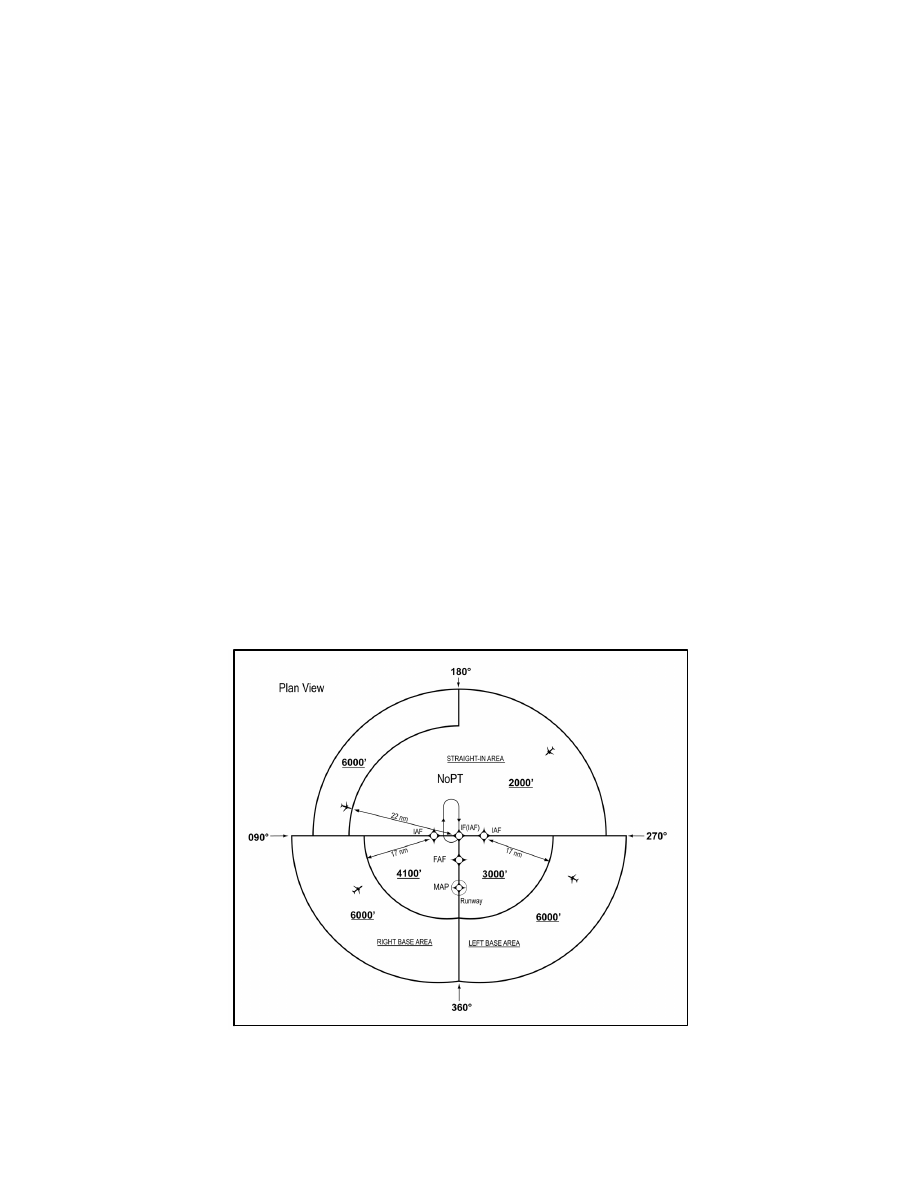
9/5/24
AIM
associated with the sector that the aircraft will enter the TAA and join the approach course from that point and
if required by that sector (i.e., sector is not labeled “NoPT), complete the HILPT course reversal.
NOTE
−
If approaching with a TO bearing that is on a sector boundary, the pilot is expected to proceed in accordance with a “NoPT”
routing unless otherwise instructed by ATC.
5.
Altitudes published within the TAA replace the MSA altitude. However, unlike MSA altitudes the TAA
altitudes are operationally usable altitudes. These altitudes provide at least 1,000 feet of obstacle clearance, more
in mountainous areas. It is important that the pilot knows which area of the TAA the aircraft will enter in order
to comply with the minimum altitude requirements. The pilot can determine which area of the TAA the aircraft
will enter by determining the magnetic bearing of the aircraft TO the fix labeled IF/IAF. The bearing should then
be compared to the published lateral boundary bearings that define the TAA areas. Do not use magnetic bearing
to the right-base or left-base IAFs to determine position.
(a)
An ATC clearance direct to an IAF or to the IF/IAF without an approach clearance does not authorize
a pilot to descend to a lower TAA altitude. If a pilot desires a lower altitude without an approach clearance, request
the lower TAA altitude from ATC. Pilots not sure of the clearance should confirm their clearance with ATC or
request a specific clearance. Pilots entering the TAA with two
−
way radio communications failure (14 CFR
Section 91.185, IFR Operations: Two
−
way Radio Communications Failure), must maintain the highest altitude
prescribed by Section 91.185(c)(2) until arriving at the appropriate IAF.
(b)
Once cleared for the approach, pilots may descend in the TAA sector to the minimum altitude depicted
within the defined area/subdivision, unless instructed otherwise by air traffic control. Pilots should plan their
descent within the TAA to permit a normal descent from the IF/IAF to the FAF. In FIG 5
left or right
−
base areas are expected to maintain a minimum altitude of 6,000 feet until within 17 NM of the
associated IAF. After crossing the 17 NM arc, descent is authorized to the lower charted altitudes. Pilots
approaching from the northwest are expected to maintain a minimum altitude of 6,000 feet, and when within 22
NM of the IF/IAF, descend to a minimum altitude of 2,000 feet MSL until crossing the IF/IAF.
FIG 5
−
4
−
5
Sectored TAA Areas
6.
U.S. Government charts depict TAAs using icons located in the plan view outside the depiction of the
actual approach procedure. (See FIG 5
6). Use of icons is necessary to avoid obscuring any portion of the “T”
Arrival Procedures
5
−
4
−
13